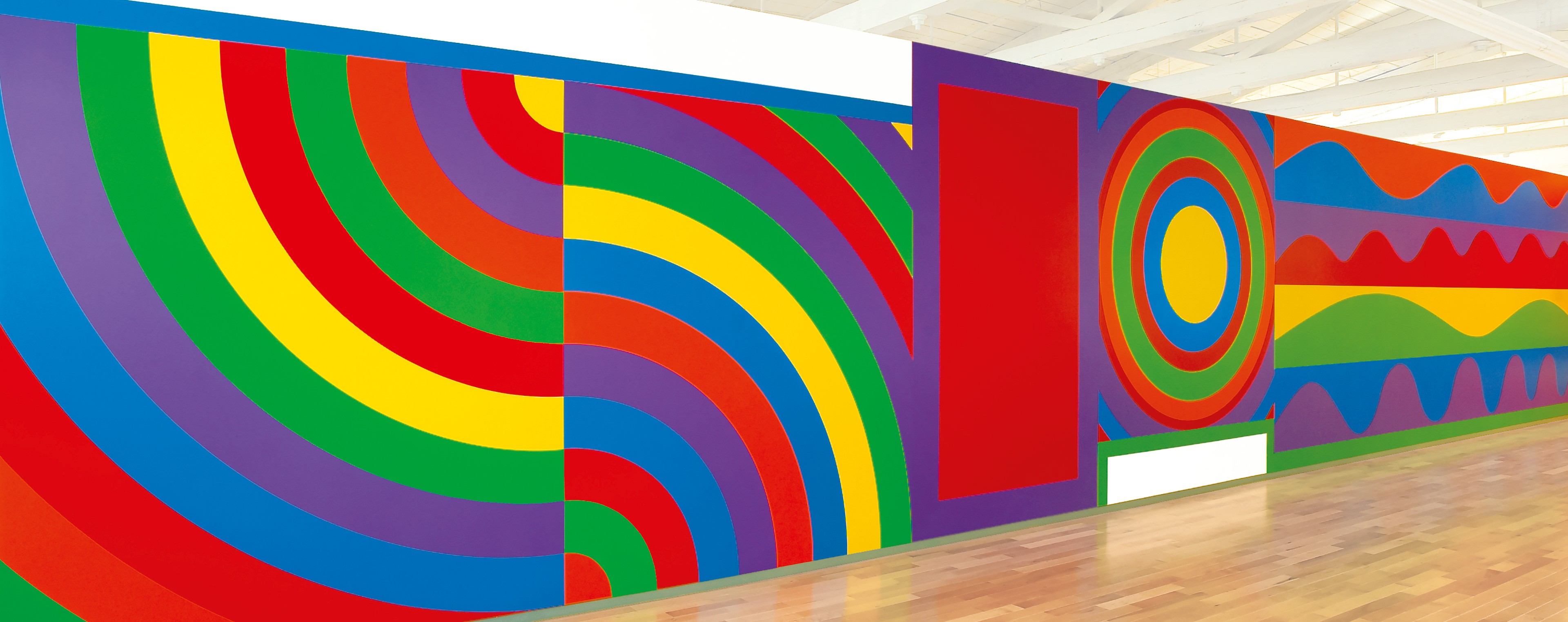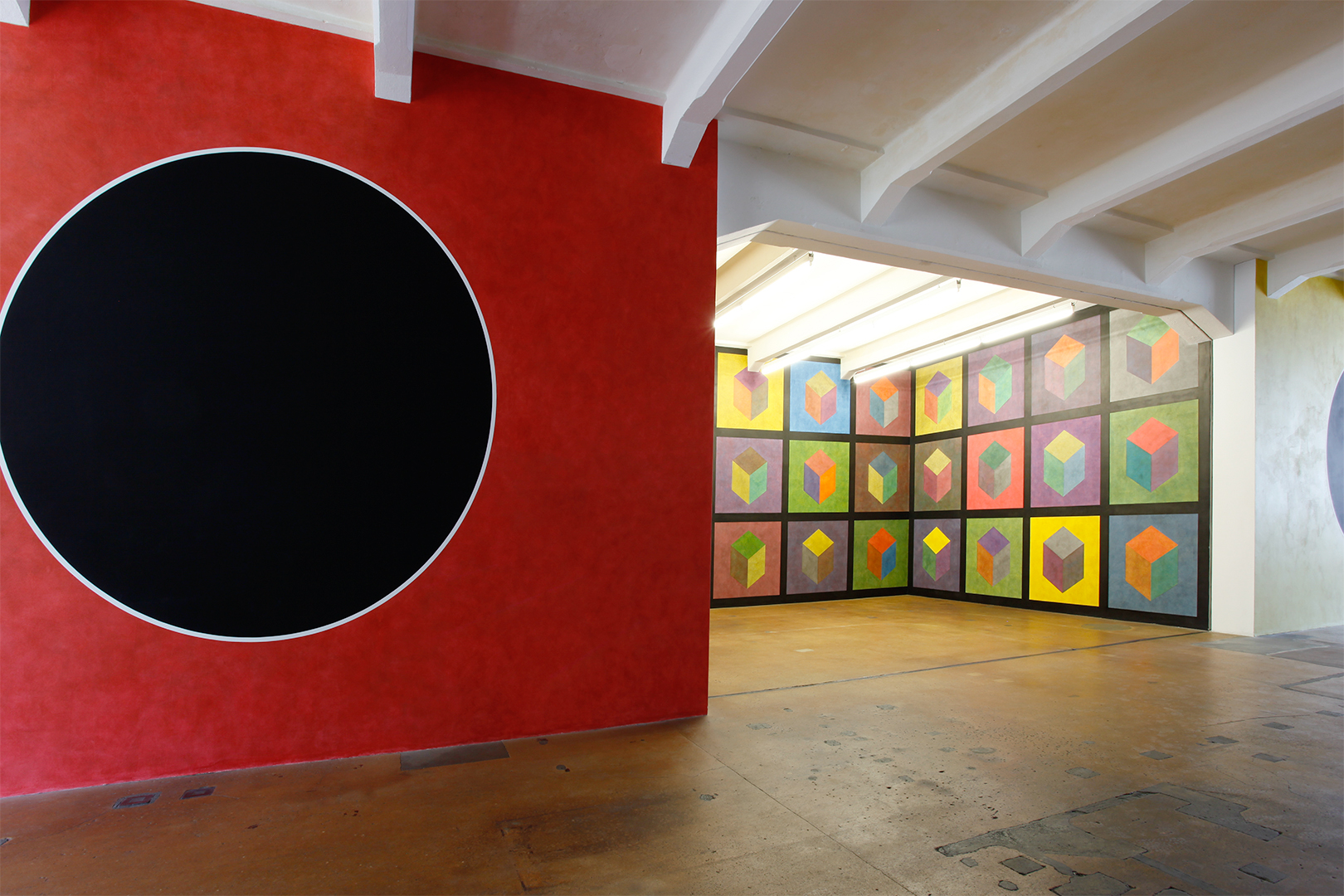

All the elements of the pictorial language thus enter into an active relationship with one another.Sol LeWitt used lines, geometric solids, ratio, patterns, formulas, and permutations to create his modern structures and wall paintings. The perception of color is put to the test by the interference of the graphic signs on the painted surfaces and, above all, by the ambient light. The viewer is invited to walk around the sculpture, to note the various colors and the combinatorial rules that have generated them. Each element painted on the wall is mirrored in its “double,” in the corresponding facet of the geometric solid, which stands at the center of the room. The number of pictorial interventions -seven -is suggested by the available portions of wall surface. Each wall is painted with a large rectangular shape in a different monochrome, framed by a black band and featuring a dense tangle of signs executed in graphite on its surface.
.jpg)
The piece was conceived specifically for the room in which it is installed.


An installation by LeWitt at the Castello di Rivoli consists of a heptagonal sculpture and one of the Wall Drawings. In more recent years the artist also incorporated painting and color into his interventions, while his sculpture was developed through the creation of large white and irregular geometric solids. In these, simple elements (such as horizontal, vertical, diagonal, and curved lines) are delineated on the wall and made complex by the combinations to which they are subjected. In the late 1960s, LeWitt began to create his Wall Drawings, drawings expanded to the dimensions of a given space. According to LeWitt, what qualifies art as art are the idea and the design phase of the work, while the execution is delegated to others. A leading figure in Conceptual Art, in 1967, LeWitt wrote Paragraphs on Conceptual Art ,one of the fundamental texts of the movement. The combinations are determined by an arbitrary logic, but their rules, once presented, are rigorously respected.
SOL LEWITT SERIES
This became the basic element for a virtually infinite series of combinations, in which a three- dimensional figure is defined by bars that delineate an empty volume, so that the structural rules with which the figure is constructed can be perceived. Sol LeWitt began to focus on making sculpture in 1962, and from 1964 on he created modular structures based on the geometric form of the cube.


 0 kommentar(er)
0 kommentar(er)
